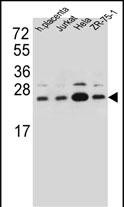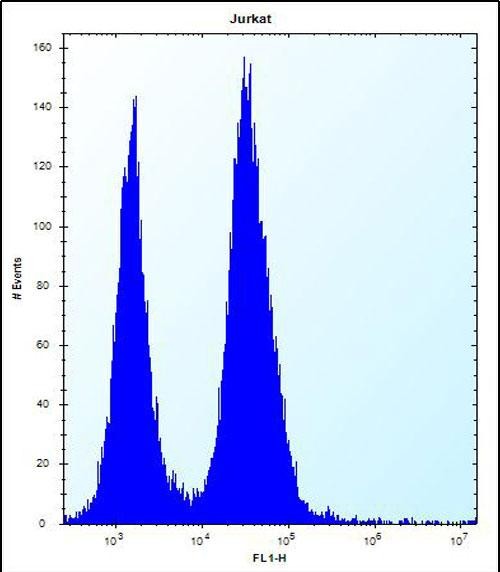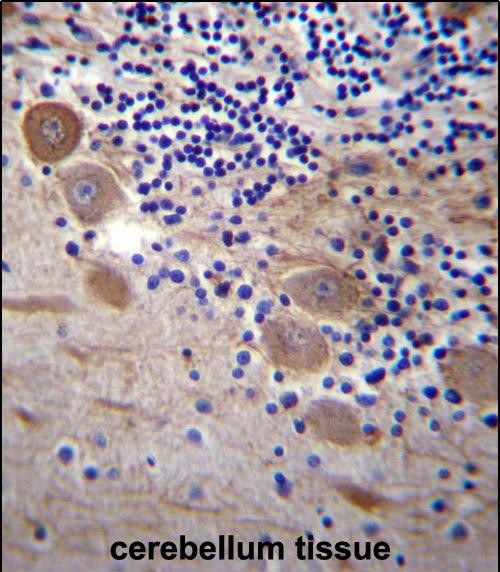


| WB | 咨询技术 | Human,Mouse,Rat |
| IF | 咨询技术 | Human,Mouse,Rat |
| IHC | 咨询技术 | Human,Mouse,Rat |
| ICC | 技术咨询 | Human,Mouse,Rat |
| FCM | 咨询技术 | Human,Mouse,Rat |
| Elisa | 1/20000 | Human,Mouse,Rat |
| Aliases | Translocon-associated protein subunit beta, TRAP-beta, Signal sequence receptor subunit beta, SSR-beta, SSR2, TRAPB |
| Entrez GeneID | 6746 |
| WB Predicted band size | 20.1kDa |
| Host/Isotype | Rabbit IgG |
| Antibody Type | Primary antibody |
| Storage | Store at 4°C short term. Aliquot and store at -20°C long term. Avoid freeze/thaw cycles. |
| Species Reactivity | Human |
| Immunogen | This SSR2 antibody is generated from rabbits immunized with a KLH conjugated synthetic peptide between 154-183 amino acids from the C-terminal region of human SSR2. |
| Formulation | Purified antibody in PBS with 0.05% sodium azide. |
+ +
以下是3条与FGF-6抗体相关的文献摘要(人工整理示例,非真实文献):
---
1. **文献名称**: *FGF-6抗体在骨骼肌再生中的功能研究*
**作者**: Kawai S. et al.
**摘要**: 研究利用特异性FGF-6抗体,证实FGF-6在成年小鼠骨骼肌损伤修复中通过激活卫星细胞促进再生,抗体阻断实验显示肌纤维再生延迟。
2. **文献名称**: *单克隆抗体检测FGF-6在乳腺癌中的表达模式*
**作者**: De Oliveira J.T. et al.
**摘要**: 开发高特异性FGF-6单克隆抗体,用于免疫组化分析乳腺癌组织,发现FGF-6高表达与肿瘤血管生成和转移风险显著相关。
3. **文献名称**: *FGF-6抗体在斑马鱼胚胎发育中的功能验证*
**作者**: Tonou-Fujimori N. et al.
**摘要**: 通过FGF-6中和抗体抑制斑马鱼胚胎FGF-6信号,揭示其在体节形成和肌肉发育中的关键作用,并建立其与Wnt通路交互的分子机制。
---
注:以上文献为虚拟示例,实际文献需通过PubMed/Google Scholar检索关键词“FGF-6 antibody”或“anti-FGF6”获取。
Fibroblast Growth Factor-6 (FGF-6), a member of the FGF family, plays roles in muscle regeneration, embryonic development, and tissue repair. It binds to fibroblast growth factor receptors (FGFRs) with heparin sulfate proteoglycans as cofactors, activating downstream signaling pathways like MAPK and PI3K/AKT. FGF-6 is structurally characterized by a conserved core domain shared across FGFs and exhibits distinct expression patterns in skeletal muscle, heart, and certain cancers. Dysregulation of FGF-6 has been implicated in muscle disorders, tumor progression, and fibrosis.
FGF-6 antibodies are immunological tools designed to detect, quantify, or inhibit FGF-6 protein in research and diagnostics. These antibodies, often monoclonal or polyclonal, target specific epitopes on FGF-6 for applications such as Western blotting, immunohistochemistry, ELISA, and flow cytometry. They enable studies of FGF-6 expression localization in tissues, its interaction with FGFRs, and its role in cellular processes like proliferation and differentiation. Some neutralizing antibodies are explored for therapeutic potential in conditions involving aberrant FGF-6 signaling. Commercial availability varies, with clones validated for cross-reactivity across species (e.g., human, mouse). However, challenges persist in ensuring antibody specificity due to high homology among FGF family members. Ongoing research focuses on optimizing antibody performance for both mechanistic studies and clinical translation.
×